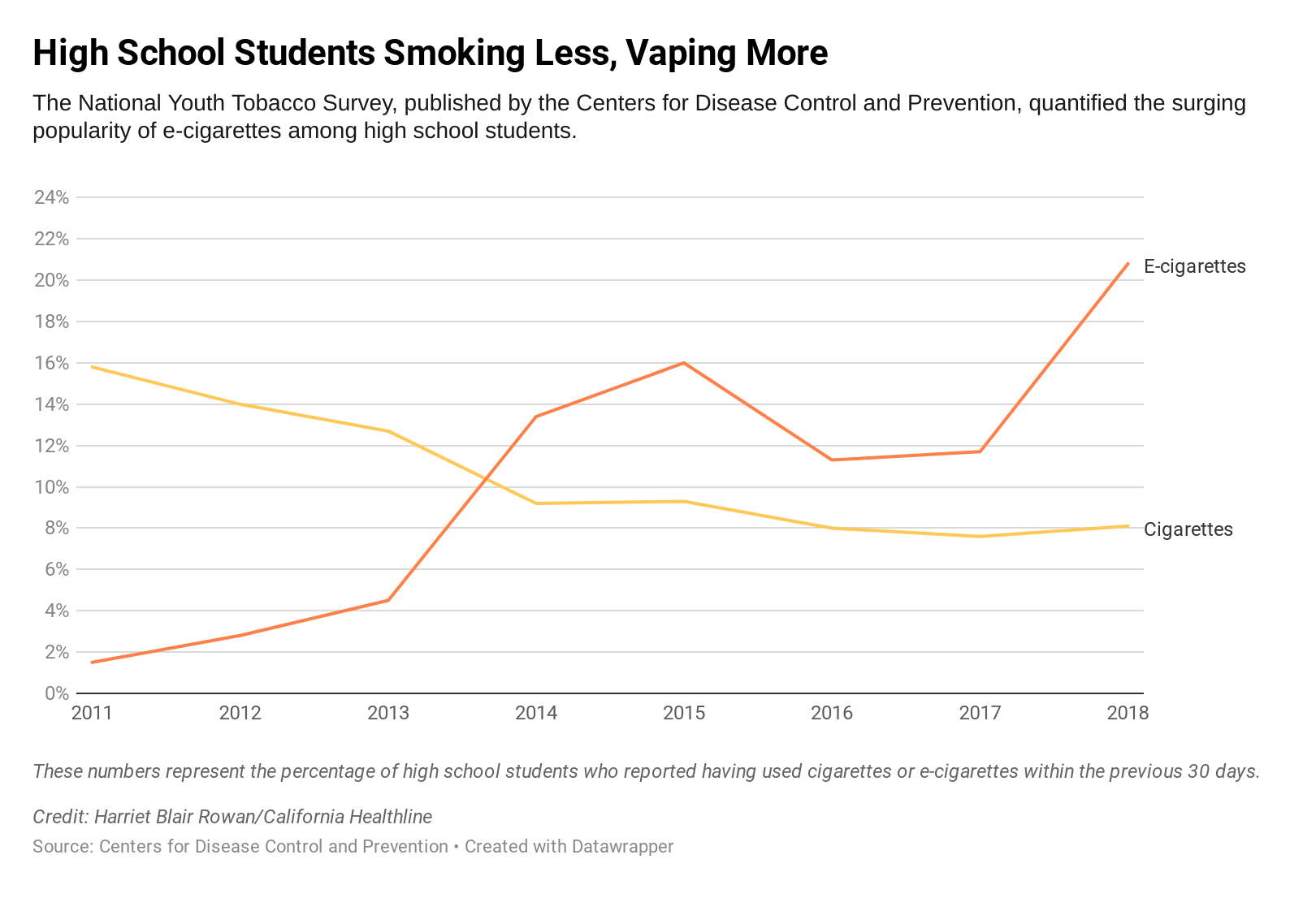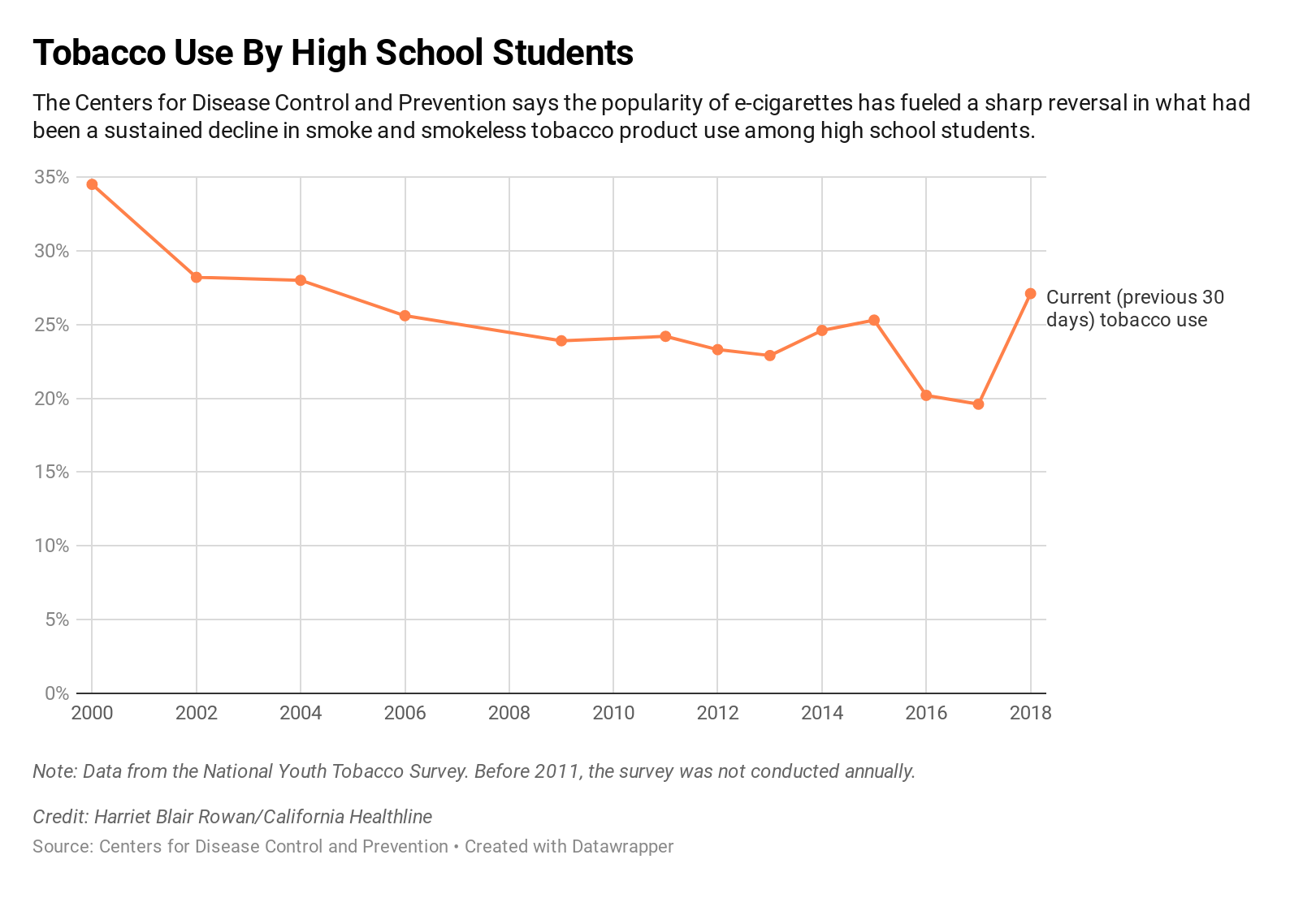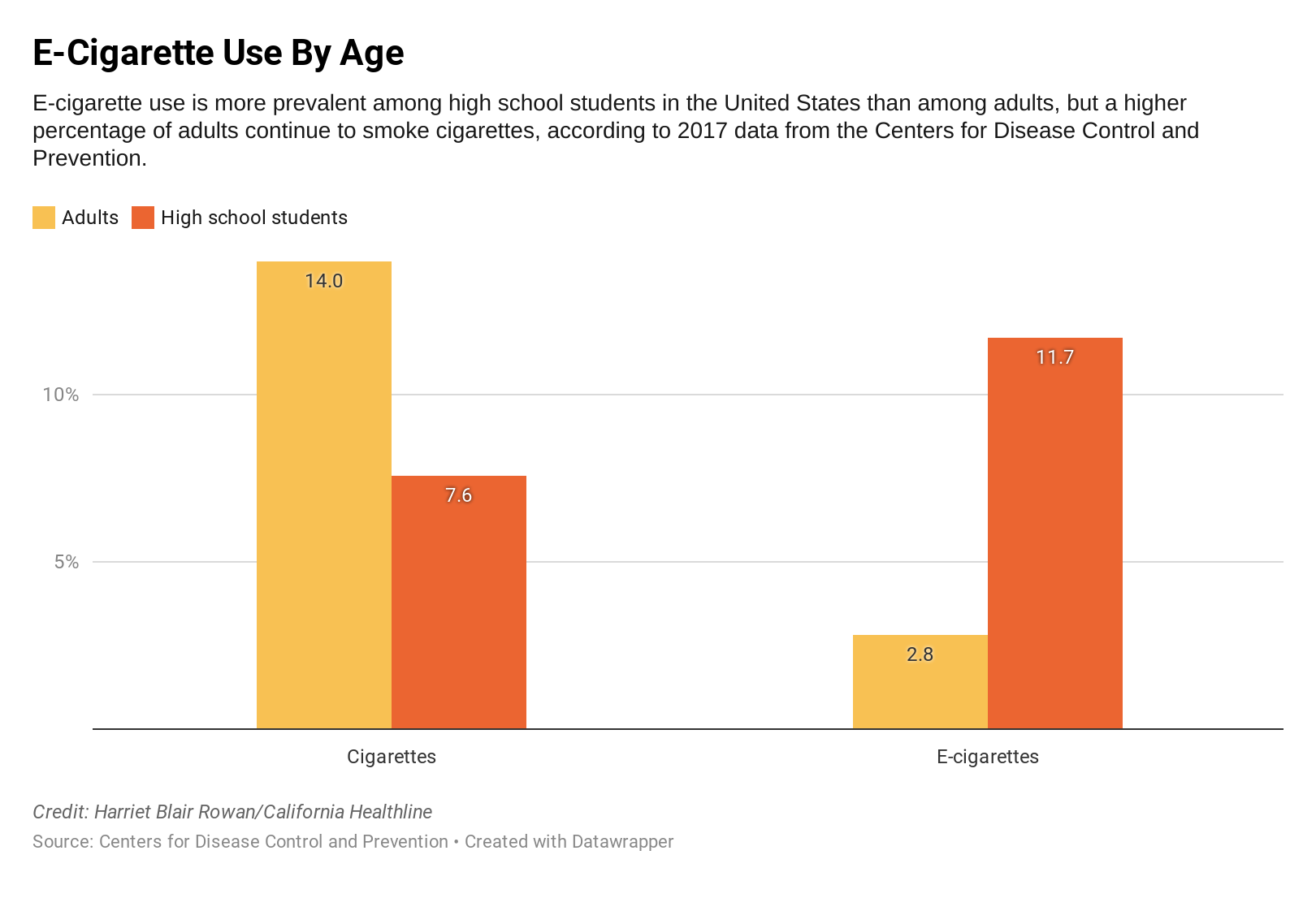The explosive rise in a serious lung illness linked to vaping spotlights the popularity of e-cigarettes among teens and young adults — and how little is known about the devices’ safety and use.
As of Tuesday, federal health officials were investigating at least 450 possible cases of the mysterious pulmonary illness across 33 states, including six cases that resulted in death. California has reported nearly 60 cases of lung illness since late June in patients with a history of vaping; one of those patients, in Los Angeles County, has died.

Vaping has surged in the past two years, particularly among teenagers and young adults. More than 20% of high school students reported vaping in 2018 — almost twice the 2017 rate — according to the federal Centers for Disease Control and Prevention. That translates to 3 million high school students using e-cigarettes in 2018 — well more than double the number who reported using traditional cigarettes.
Vaping is the popular shorthand for using electronic cigarettes to “vaporize” nicotine or an array of liquid concentrates. The devices initially were marketed as a way to inhale nicotine without the risks associated with burning tobacco. But they quickly evolved for use with hundreds of combinations of flavorings and chemical compounds, including THC, the psychoactive ingredient in marijuana, and other marijuana extracts.
Federal and state investigators say many of the people who have fallen ill said they had vaped THC, and officials are focusing on contaminants in black-market products containing THC as possible culprits. Other patients reported using nicotine cartridges, and authorities stress that they have yet to identify a specific device or chemical at play. For now, officials are warning people of all ages to avoid e-cigarettes, particularly products purchased on the street.

Vaping is now so pervasive among high school students that federal health officials say its use has fueled a sharp reversal in what had been a celebrated two-decade decline in overall tobacco use by teenagers. As of 2018, the CDC’s National Youth Tobacco Survey showed overall tobacco usage among high schoolers had reverted to levels not seen since 2004. Though marketed as a healthy alternative to traditional cigarettes, e-cigarettes can contain substantial levels of nicotine, which is highly addictive.
Juul, the San Francisco-based company that dominates the e-cigarette trade, and other manufacturers publicly market their devices as a tool to help adults quit smoking. But government surveys show the sleek devices — and multitude of copycat products — are far more popular among high school students than adults. While the legal age to buy e-cigarettes is 18 in most states — and 21 in California — the products are widely available online and not all sellers require proof of age. And vaping kits now come in the form of pens, flash drives, key fobs, even watches — making them both stylish and easy to disguise.

This KHN story first published on California Healthline, a service of the California Health Care Foundation.
Kaiser Health News (KHN) is a national health policy news service. It is an editorially independent program of the Henry J. Kaiser Family Foundation which is not affiliated with Kaiser Permanente.



Shares